Lektsia_1_FDT.ppt
- Количество слайдов: 20
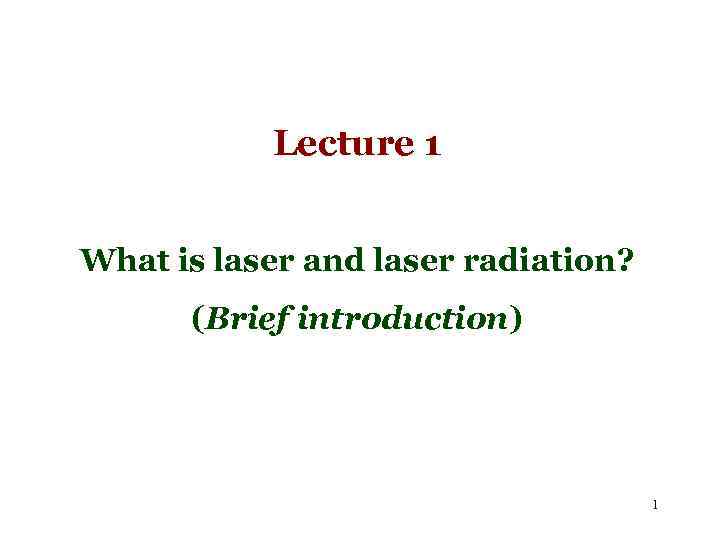 Lecture 1 What is laser and laser radiation? (Brief introduction) 1
Lecture 1 What is laser and laser radiation? (Brief introduction) 1
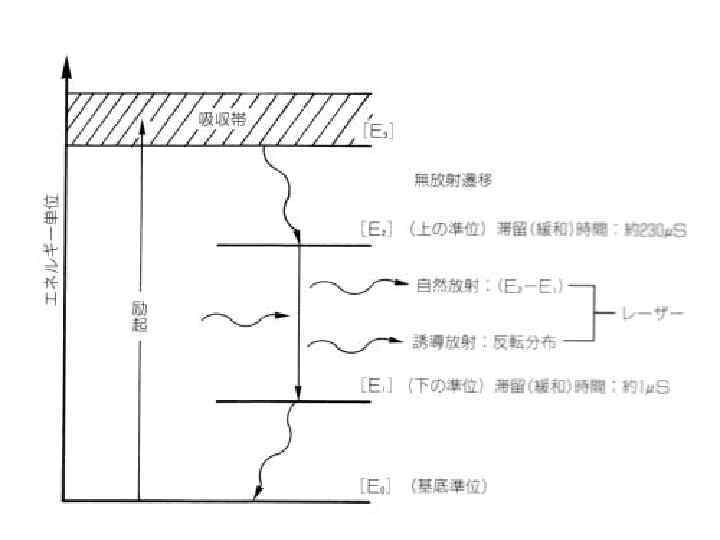 2
2
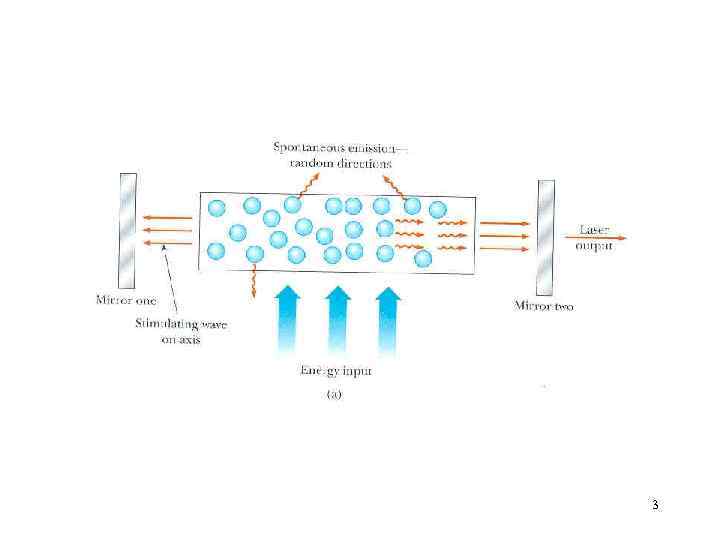 3
3
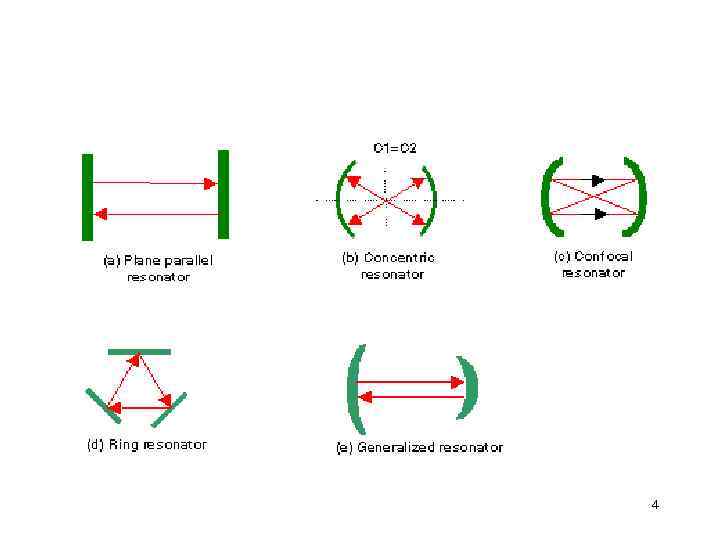 4
4
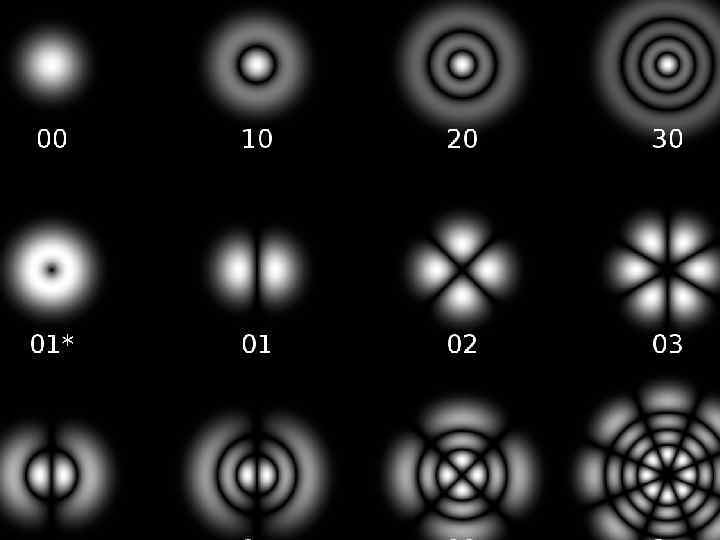 5
5
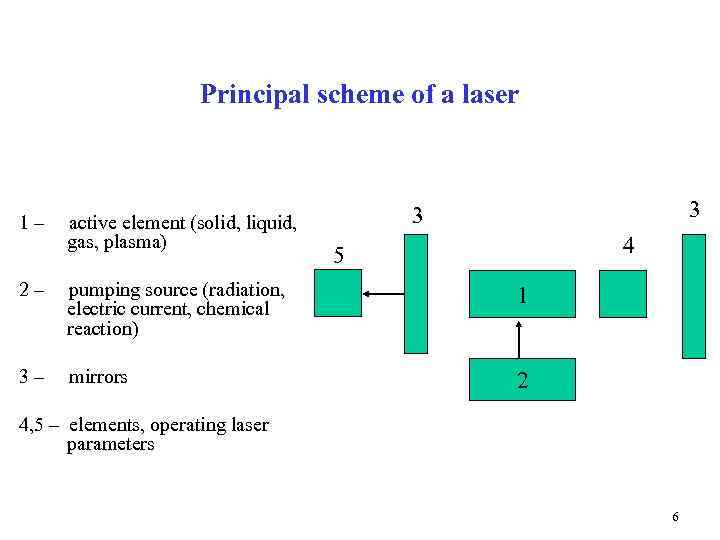 Principal scheme of a laser 1– active element (solid, liquid, gas, plasma) 3 3 4 5 2– pumping source (radiation, electric current, chemical reaction) 1 3– mirrors 2 4, 5 – elements, operating laser parameters 6
Principal scheme of a laser 1– active element (solid, liquid, gas, plasma) 3 3 4 5 2– pumping source (radiation, electric current, chemical reaction) 1 3– mirrors 2 4, 5 – elements, operating laser parameters 6
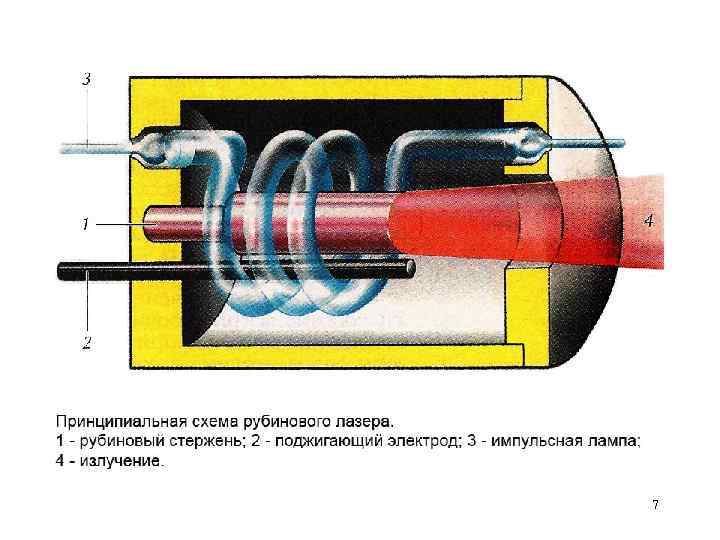 7
7
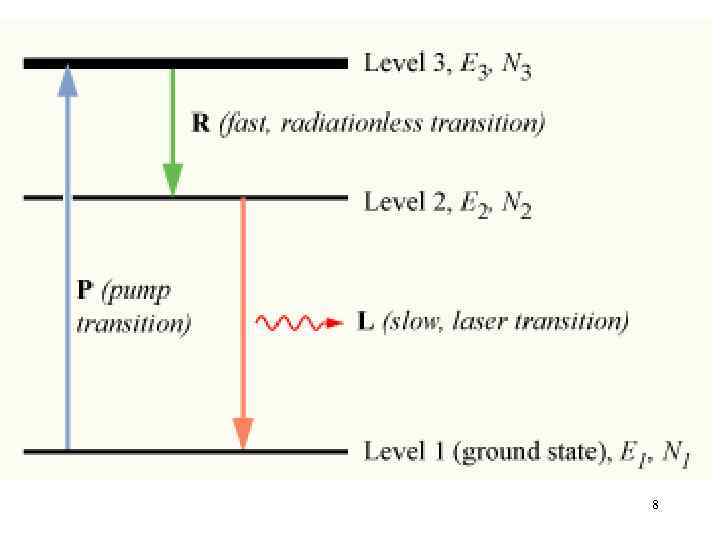 8
8
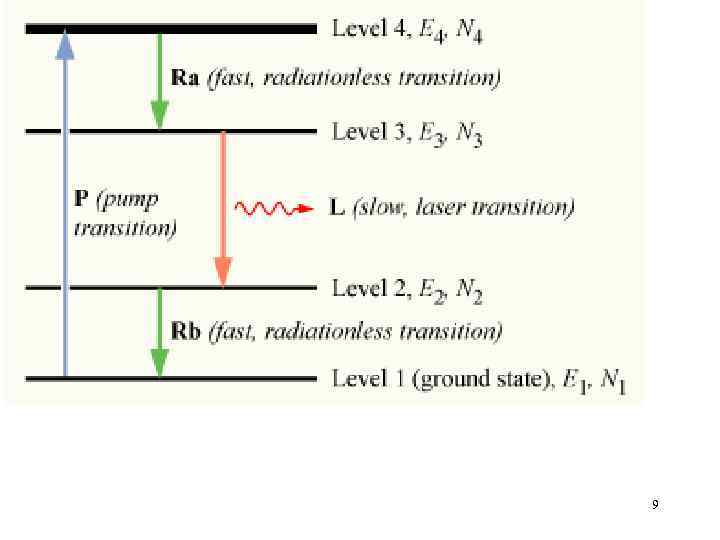 9
9
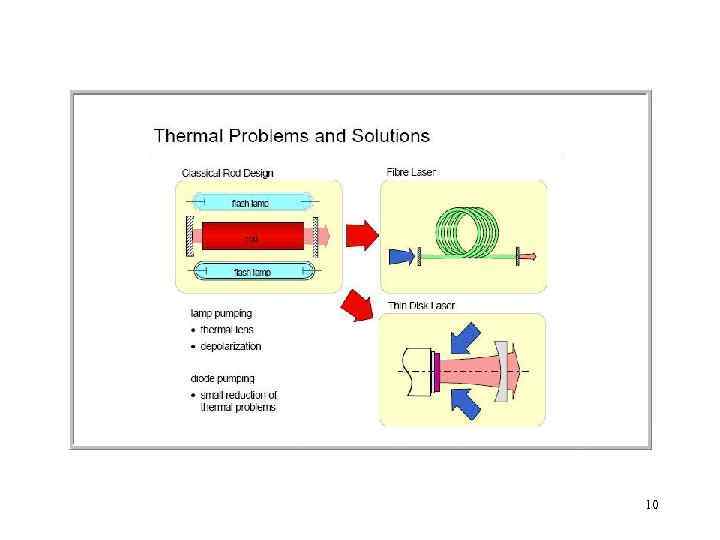 10
10
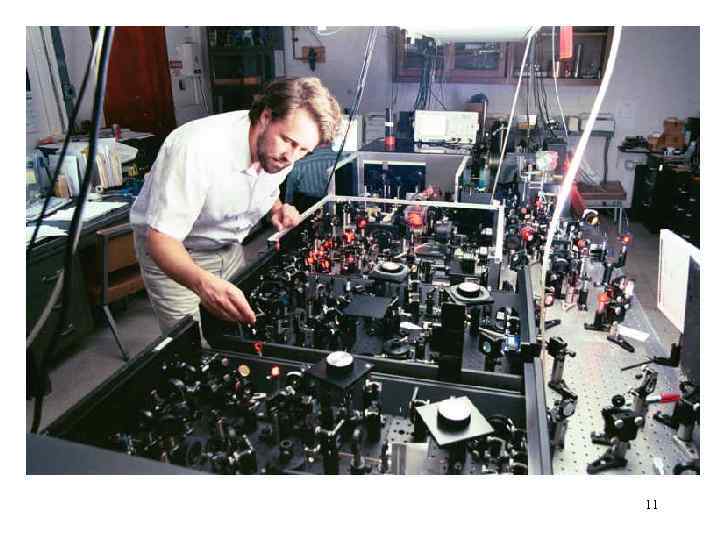 11
11
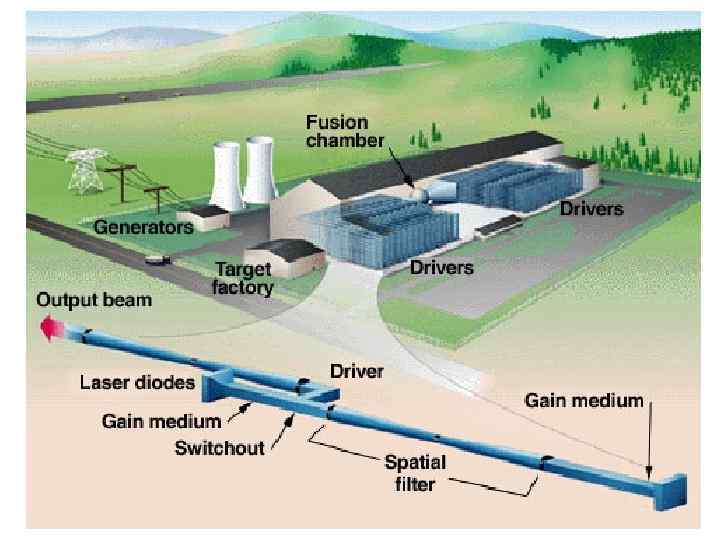 12
12
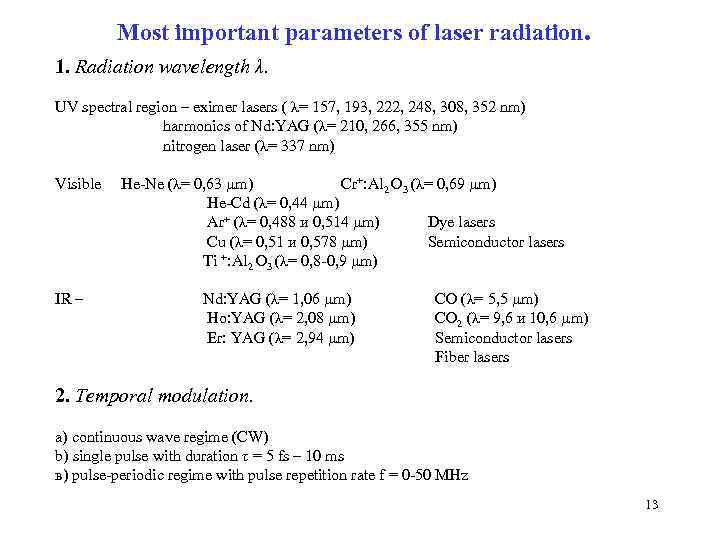 Most important parameters of laser radiation. 1. Radiation wavelength λ. UV spectral region – eximer lasers ( λ= 157, 193, 222, 248, 308, 352 nm) harmonics of Nd: YAG (λ= 210, 266, 355 nm) nitrogen laser (λ= 337 nm) Visible IR – He-Ne (λ= 0, 63 µm) Cr+: Al 2 O 3 (λ= 0, 69 µm) Не-Сd (λ= 0, 44 µm) Ar+ (λ= 0, 488 и 0, 514 µm) Dye lasers Сu (λ= 0, 51 и 0, 578 µm) Semiconductor lasers Ti +: Al 2 O 3 (λ= 0, 8 -0, 9 µm) Nd: YAG (λ= 1, 06 µm) Ho: YAG (λ= 2, 08 µm) Er: YAG (λ= 2, 94 µm) СО (λ= 5, 5 µm) СО 2 (λ= 9, 6 и 10, 6 µm) Semiconductor lasers Fiber lasers 2. Temporal modulation. a) continuous wave regime (CW) b) single pulse with duration τ = 5 fs – 10 ms в) pulse-periodic regime with pulse repetition rate f = 0 -50 MHz 13
Most important parameters of laser radiation. 1. Radiation wavelength λ. UV spectral region – eximer lasers ( λ= 157, 193, 222, 248, 308, 352 nm) harmonics of Nd: YAG (λ= 210, 266, 355 nm) nitrogen laser (λ= 337 nm) Visible IR – He-Ne (λ= 0, 63 µm) Cr+: Al 2 O 3 (λ= 0, 69 µm) Не-Сd (λ= 0, 44 µm) Ar+ (λ= 0, 488 и 0, 514 µm) Dye lasers Сu (λ= 0, 51 и 0, 578 µm) Semiconductor lasers Ti +: Al 2 O 3 (λ= 0, 8 -0, 9 µm) Nd: YAG (λ= 1, 06 µm) Ho: YAG (λ= 2, 08 µm) Er: YAG (λ= 2, 94 µm) СО (λ= 5, 5 µm) СО 2 (λ= 9, 6 и 10, 6 µm) Semiconductor lasers Fiber lasers 2. Temporal modulation. a) continuous wave regime (CW) b) single pulse with duration τ = 5 fs – 10 ms в) pulse-periodic regime with pulse repetition rate f = 0 -50 MHz 13
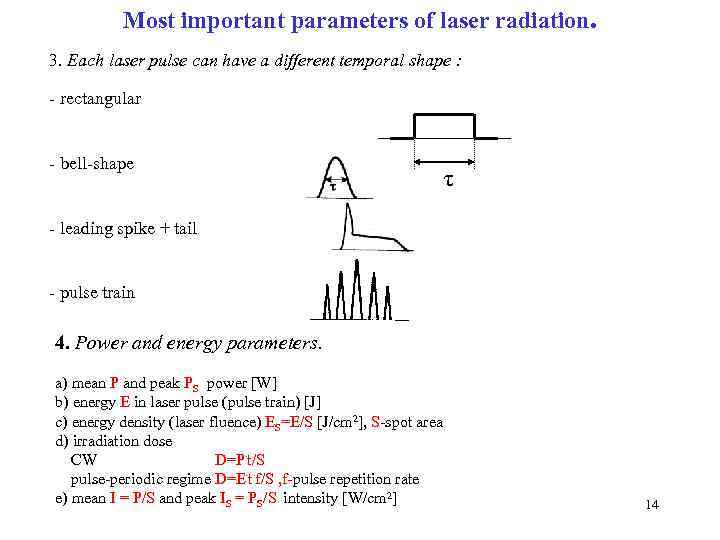 Most important parameters of laser radiation. 3. Each laser pulse can have a different temporal shape : - rectangular - bell-shape τ - leading spike + tail - pulse train 4. Power and energy parameters. а) mean Р and peak PS power [W] b) energy E in laser pulse (pulse train) [J] c) energy density (laser fluence) ES=E/S [J/cm 2], S-spot area d) irradiation dose CW D=P. t/S pulse-periodic regime D=E. t. f/S , f-pulse repetition rate e) mean I = P/S and peak IS = PS/S intensity [W/сm 2] 14
Most important parameters of laser radiation. 3. Each laser pulse can have a different temporal shape : - rectangular - bell-shape τ - leading spike + tail - pulse train 4. Power and energy parameters. а) mean Р and peak PS power [W] b) energy E in laser pulse (pulse train) [J] c) energy density (laser fluence) ES=E/S [J/cm 2], S-spot area d) irradiation dose CW D=P. t/S pulse-periodic regime D=E. t. f/S , f-pulse repetition rate e) mean I = P/S and peak IS = PS/S intensity [W/сm 2] 14
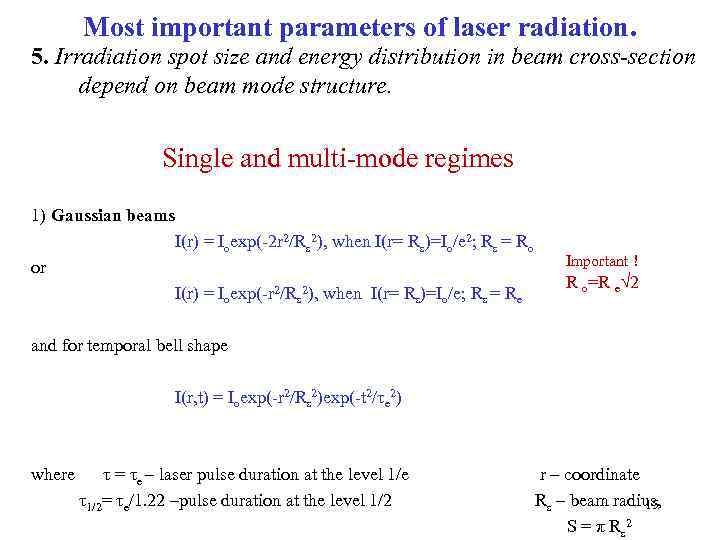 Most important parameters of laser radiation. 5. Irradiation spot size and energy distribution in beam cross-section depend on beam mode structure. Single and multi-mode regimes 1) Gaussian beams I(r) = Ioexp(-2 r 2/Rs 2), when I(r= Rs)=Io/e 2; Rs = Ro or I(r) = Ioexp(-r 2/Rs 2), when I(r= Rs)=Io/e; Rs = Re Important ! R o=R e 2 and for temporal bell shape I(r, t) = Ioexp(-r 2/Rs 2)exp(-t 2/τe 2) where τ = τe – laser pulse duration at the level 1/е τ1/2= τe/1. 22 –pulse duration at the level 1/2 r – coordinate Rs – beam radius, 15 S = π R s 2
Most important parameters of laser radiation. 5. Irradiation spot size and energy distribution in beam cross-section depend on beam mode structure. Single and multi-mode regimes 1) Gaussian beams I(r) = Ioexp(-2 r 2/Rs 2), when I(r= Rs)=Io/e 2; Rs = Ro or I(r) = Ioexp(-r 2/Rs 2), when I(r= Rs)=Io/e; Rs = Re Important ! R o=R e 2 and for temporal bell shape I(r, t) = Ioexp(-r 2/Rs 2)exp(-t 2/τe 2) where τ = τe – laser pulse duration at the level 1/е τ1/2= τe/1. 22 –pulse duration at the level 1/2 r – coordinate Rs – beam radius, 15 S = π R s 2
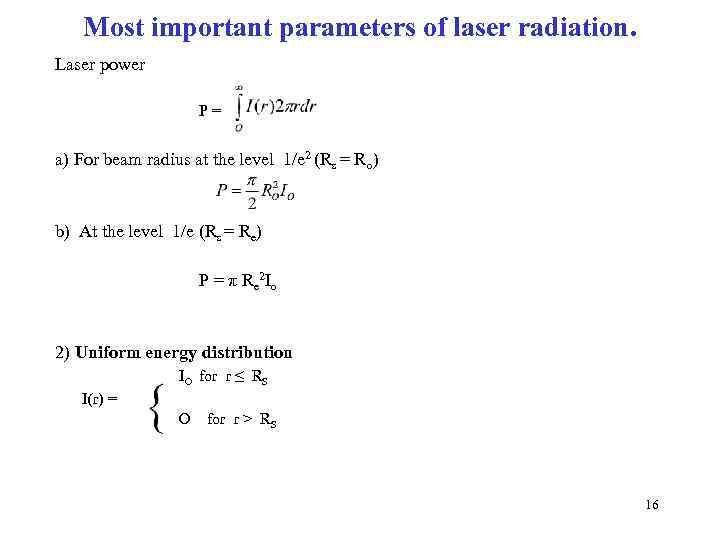 Most important parameters of laser radiation. Laser power P= a) For beam radius at the level 1/е 2 (Rs = Ro) b) At the level 1/е (Rs = Re) P = π Re 2 Io 2) Uniform energy distribution IO for r ≤ RS I(r) = O for r > RS 16
Most important parameters of laser radiation. Laser power P= a) For beam radius at the level 1/е 2 (Rs = Ro) b) At the level 1/е (Rs = Re) P = π Re 2 Io 2) Uniform energy distribution IO for r ≤ RS I(r) = O for r > RS 16
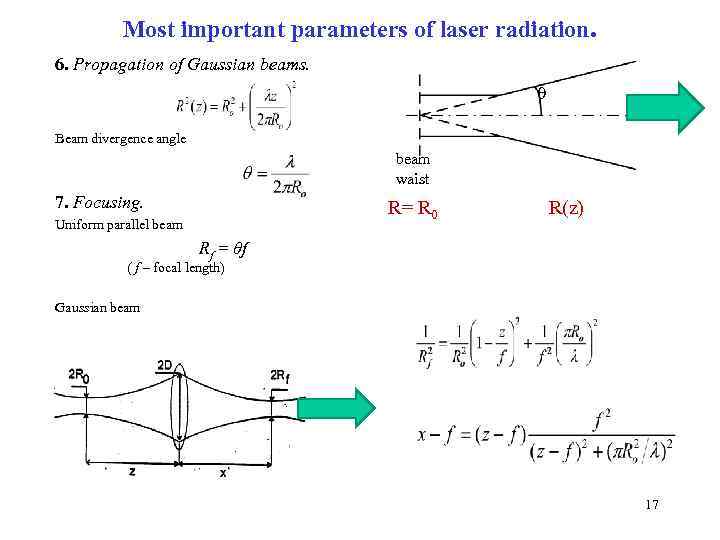 Most important parameters of laser radiation. 6. Propagation of Gaussian beams. Beam divergence angle beam waist 7. Focusing. R= R 0 Uniform parallel beam R(z) Rf = θf ( f – focal length) Gaussian beam 17
Most important parameters of laser radiation. 6. Propagation of Gaussian beams. Beam divergence angle beam waist 7. Focusing. R= R 0 Uniform parallel beam R(z) Rf = θf ( f – focal length) Gaussian beam 17
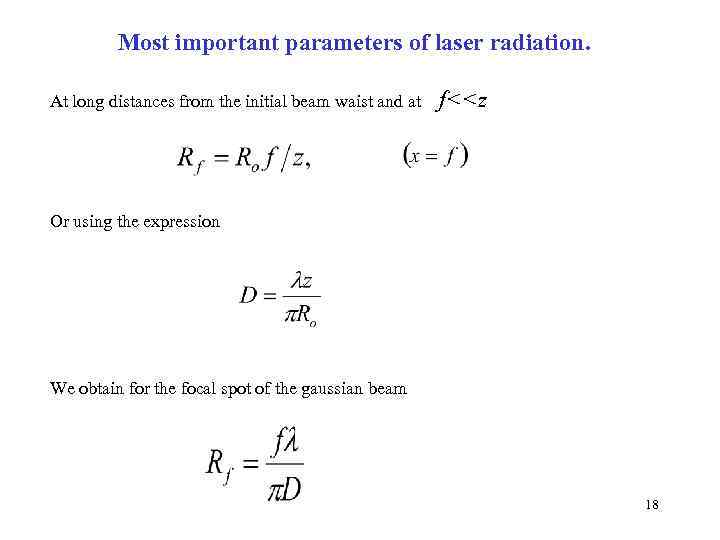 Most important parameters of laser radiation. At long distances from the initial beam waist and at f<
Most important parameters of laser radiation. At long distances from the initial beam waist and at f<
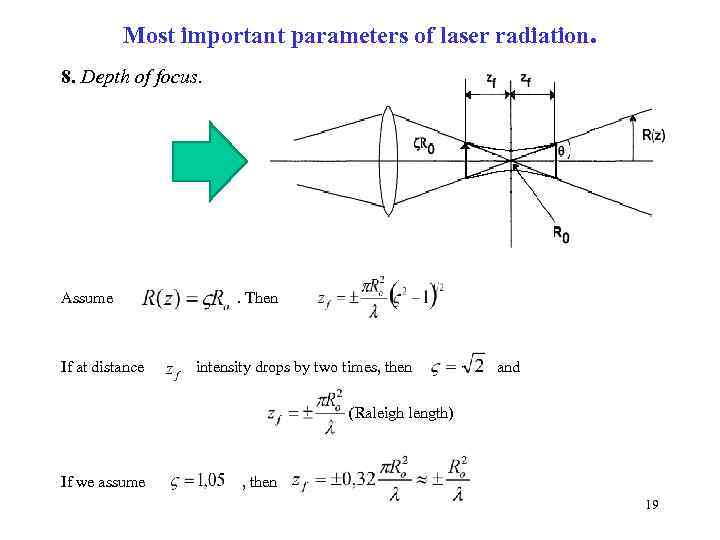 Most important parameters of laser radiation. 8. Depth of focus. Assume If at distance . Then intensity drops by two times, then and (Raleigh length) If we assume , then 19
Most important parameters of laser radiation. 8. Depth of focus. Assume If at distance . Then intensity drops by two times, then and (Raleigh length) If we assume , then 19
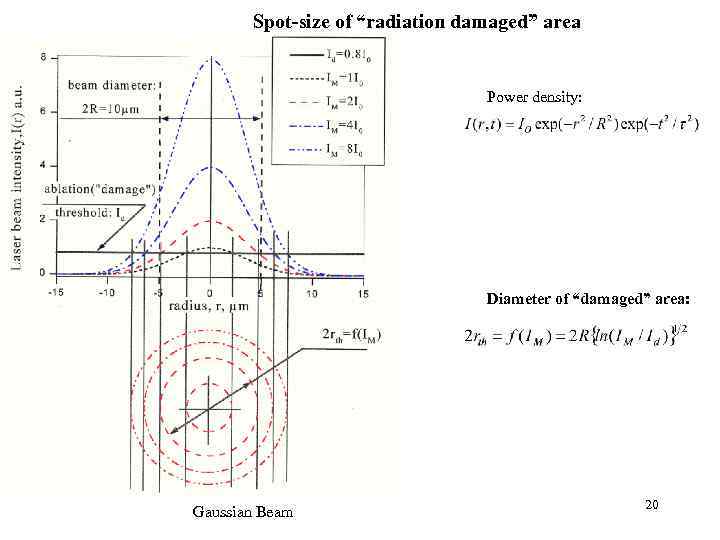 Spot-size of “radiation damaged” area Power density: Laser pulse energy: Diameter of “damaged” area: Gaussian Beam 20
Spot-size of “radiation damaged” area Power density: Laser pulse energy: Diameter of “damaged” area: Gaussian Beam 20
